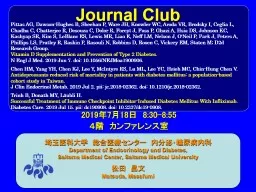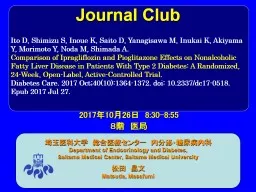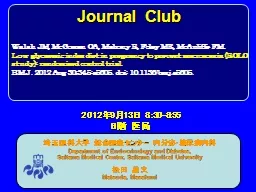PPT-Journal Club 埼玉医科大学 総合医療センター 内分泌・糖尿病内科
Author : pinperc | Published Date : 2020-06-15
Department of Endocrinology and Diabetes Saitama Medical Center Saitama Medical University 松田 昌文 Matsuda Masafumi 2019 年 7 月 18 日 830855
Presentation Embed Code
Download Presentation
Download Presentation The PPT/PDF document "Journal Club 埼玉医科大学 総合..." is the property of its rightful owner. Permission is granted to download and print the materials on this website for personal, non-commercial use only, and to display it on your personal computer provided you do not modify the materials and that you retain all copyright notices contained in the materials. By downloading content from our website, you accept the terms of this agreement.
Journal Club 埼玉医科大学 総合医療センター 内分泌・糖尿病内科: Transcript
Download Rules Of Document
"Journal Club 埼玉医科大学 総合医療センター 内分泌・糖尿病内科"The content belongs to its owner. You may download and print it for personal use, without modification, and keep all copyright notices. By downloading, you agree to these terms.
Related Documents














